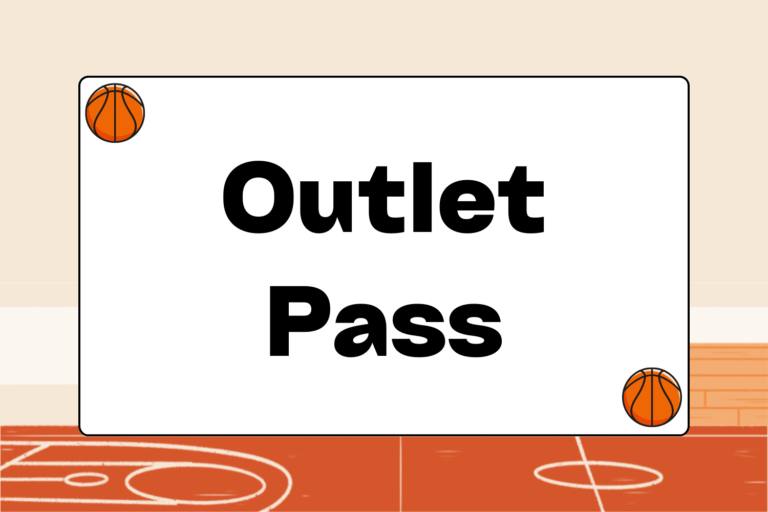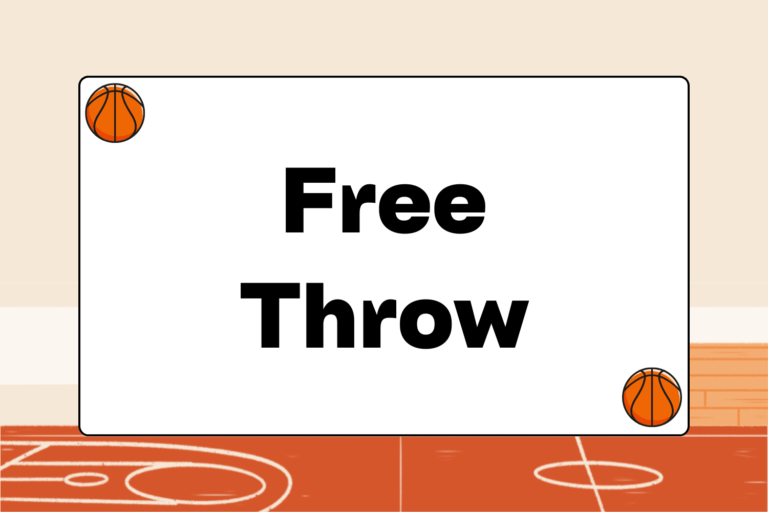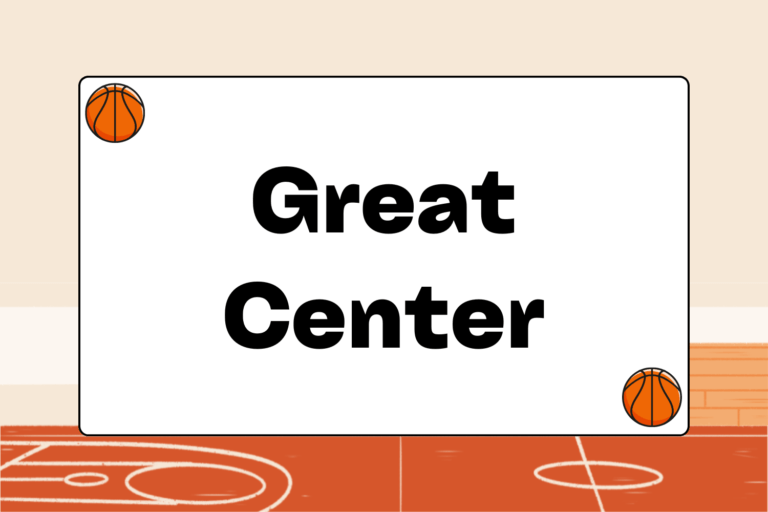A basketball team consists of five players on the floor at all times. They are:
- A point guard
- A shooting guard
- A small forward
- A power forward
- A center
As their names would suggest, the two guards, the two forwards, and the center have completely different responsibilities on the floor. To fully understand competitive basketball, it’s essential to know each position’s role within a team’s offense and defense.
Point Guard
The point guard is the floor leader on offense. He sets the tone by bringing the ball upcourt, calling plays, and directing the offense. More than any other player on the floor, he must understand each player’s personal strengths and role on the floor. He needs to be a good ball-distributor and have the vision to see a player getting open.
Main Characteristics
The point guard must also control the tempo of the game and be able to run the fast break after receiving a quick outlet pass:
- The point guard’s often the quickest player on the floor, and he should be able to dribble-penetrate to the basket.
- He and the coach need to communicate clearly, and the point guard should act like the “coach” on the court.
- In addition, he needs to handle the various personalities on the team in order to be constructive and positive at all times.
Defensively, the point guard must be able to slow down the opposing team’s ball-handler. The point guard rarely receives the most difficult defensive assignment. However, the point guard should be able to stop the ball or steer the ball-handler into a trapping situation.
Shooting Guard
As the name suggests, the shooting guard must be a good shooter from short and long range. In addition, the shooting guard must also be versatile enough to handle some of the point guard’s ball-handling duties, while also filling the lane on the fast break like a wing player. For this reason, the shooting guard is typically an athletic and talented scorer.
Main Characteristics
A shooting guard should be a competent passer that can distribute the ball to teammates setting up in the low post. He must also be able to receive a pass from a teammate and find an open shot with a quick release. The best shooting guards can fire from long range, forcing the defense to spread out.
The shooting guard must also guard the opponent’s best perimeter scorer. He’s usually easier to substitute for than the point guard, which means he often spends more energy on the defensive end guarding a skilled offensive player.
Mental Edge
If you’re having trouble finding a position, develop your overall game and your coach will find a position for you. Once you’re given a home on the floor, you can work on the specific responsibilities of that position.
Small Forward
The small forward is usually required to be a jack-of-all-trades, and for that reason he’s often the best athlete on the floor. The small forward is a perimeter player who can play down low when necessary. In addition, he’s a ball-handler who can get inside and attack the rim. He must have a strong mid-range offensive game, but the ability to knock down a shot from three-point range is a huge plus.
Main Characteristics
A quick first step is a small forward’s best friend. If he can quickly get to the basket or fill the lane on the fast break, he can be a huge asset to his team. At the same time, the small forward must be physical enough to absorb contact when getting into the lane on dribble-penetration. The small forward must also be a good foul shooter because of the contact he usually draws from bigger players.
Defensively, the small forward should be able to guard both larger and smaller players. On pick-and-rolls and fast breaks, the small forward will have to switch to guard someone else’s man. He must be versatile enough to hold his own no matter whom he ends up guarding.
Power Forward
The big men on the court — centers and power forwards — have more specialized roles. The power forward often makes his biggest contributions without having the ball in his hands. He sets screens, boxes out, and plays solid defense. He must be an intimidator in the paint and keep offensive penetrators away from the basket.
Main Characteristics
Five guys on the court working together can achieve more than five talented individuals who come and go as individuals.
Kareem Abdul-Jabbar
Retired Hall of Fame NBA Center
The power forward must be able to establish position on the low block, and have the offensive moves and quick footwork to put the ball in the basket. In addition, he should be a good enough passer to find the open man or a cutter, especially when his path to the basket is blocked. He’s generally the player who takes care of the little things, like setting up teammates and setting screens.
The power forward’s most important responsibility, however, is cleaning up the glass and creating extra possessions on offense. He has to be able to move other men with his body and jump high for the rebound. Lastly, the power forward should be a good foul shooter, because he will draw contact on both ends of the court.
Center
The center is usually the tallest man on the floor and the player closest to the basket. For these reasons, he’s frequently the most important man on the floor. Generally, centers are the focal point of the offense and can facilitate every other player’s offensive game with solid screens and crisp passing.
A center who has quick feet and a strong upper body can dominate the low block and open up the entire offense for everyone else. However, the center might be more instrumental on defense:
- A center who can block shots and intimidate players flashing into the paint can change the entire game.
- He must be able to guard the opposing center and provide help when other offensive players attack the basket.
A dominant center makes for a game-changing player. It’s important to remember that some of the best centers aren’t very tall and some of the tallest players aren’t centers. It’s more essential for the center to have the disposition and desire to own the painted area than it is for him to be the tallest player on the floor.
Versatility
Some basketball players were born to play specific positions and some players develop the skills over time for certain positions. A player who can fill in at multiple positions is a valuable asset to a coach and his teammates, and he’s hard to keep off the floor.
At the same time, even if you have a specific position that you always play, it’s important to develop your overall game. A point guard who can box out to get a rebound, or a center who can dribble, will help the team win.





